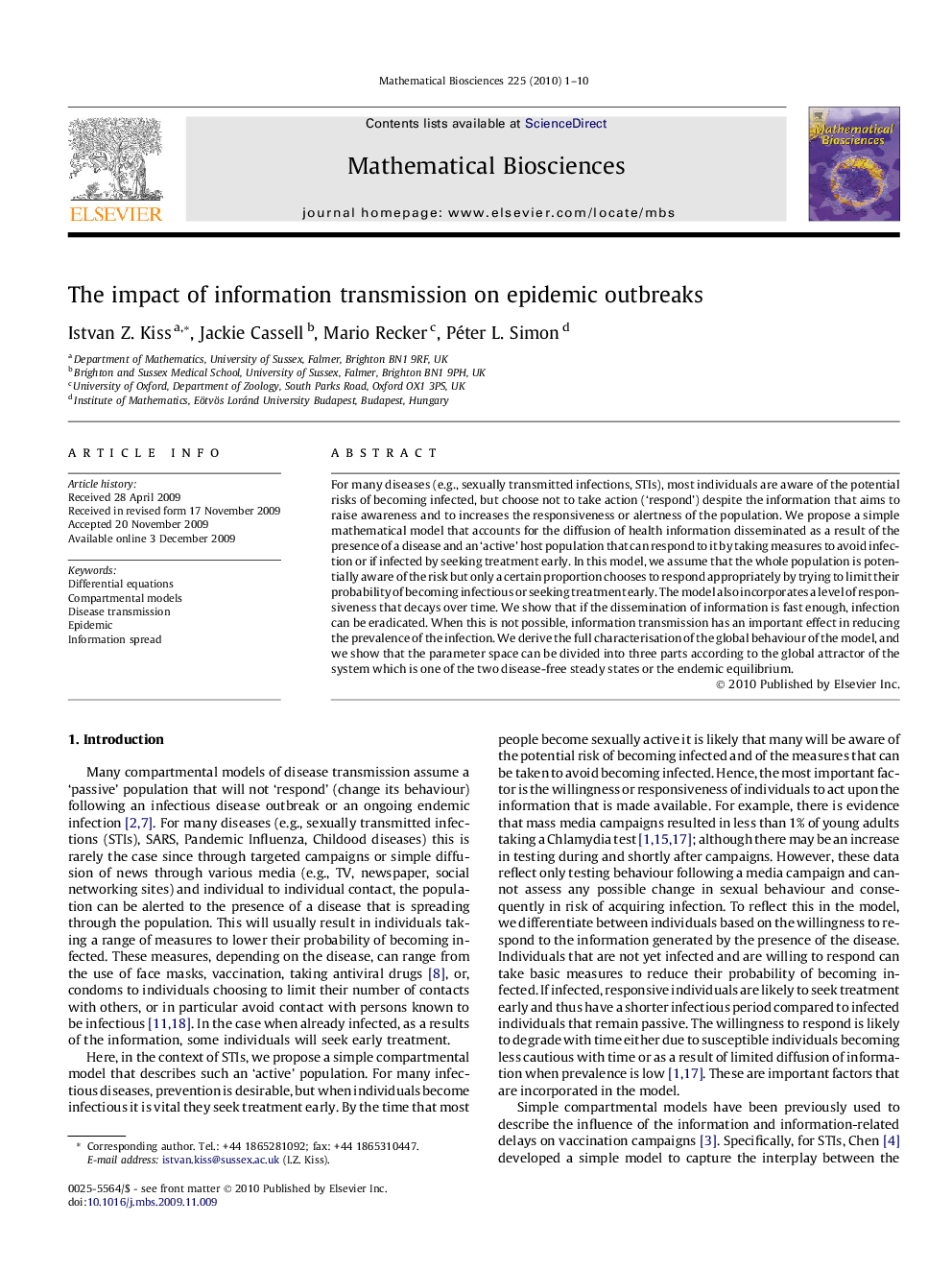| Article ID | Journal | Published Year | Pages | File Type |
|---|---|---|---|---|
| 4500649 | Mathematical Biosciences | 2010 | 10 Pages |
For many diseases (e.g., sexually transmitted infections, STIs), most individuals are aware of the potential risks of becoming infected, but choose not to take action (‘respond’) despite the information that aims to raise awareness and to increases the responsiveness or alertness of the population. We propose a simple mathematical model that accounts for the diffusion of health information disseminated as a result of the presence of a disease and an ‘active’ host population that can respond to it by taking measures to avoid infection or if infected by seeking treatment early. In this model, we assume that the whole population is potentially aware of the risk but only a certain proportion chooses to respond appropriately by trying to limit their probability of becoming infectious or seeking treatment early. The model also incorporates a level of responsiveness that decays over time. We show that if the dissemination of information is fast enough, infection can be eradicated. When this is not possible, information transmission has an important effect in reducing the prevalence of the infection. We derive the full characterisation of the global behaviour of the model, and we show that the parameter space can be divided into three parts according to the global attractor of the system which is one of the two disease-free steady states or the endemic equilibrium.
